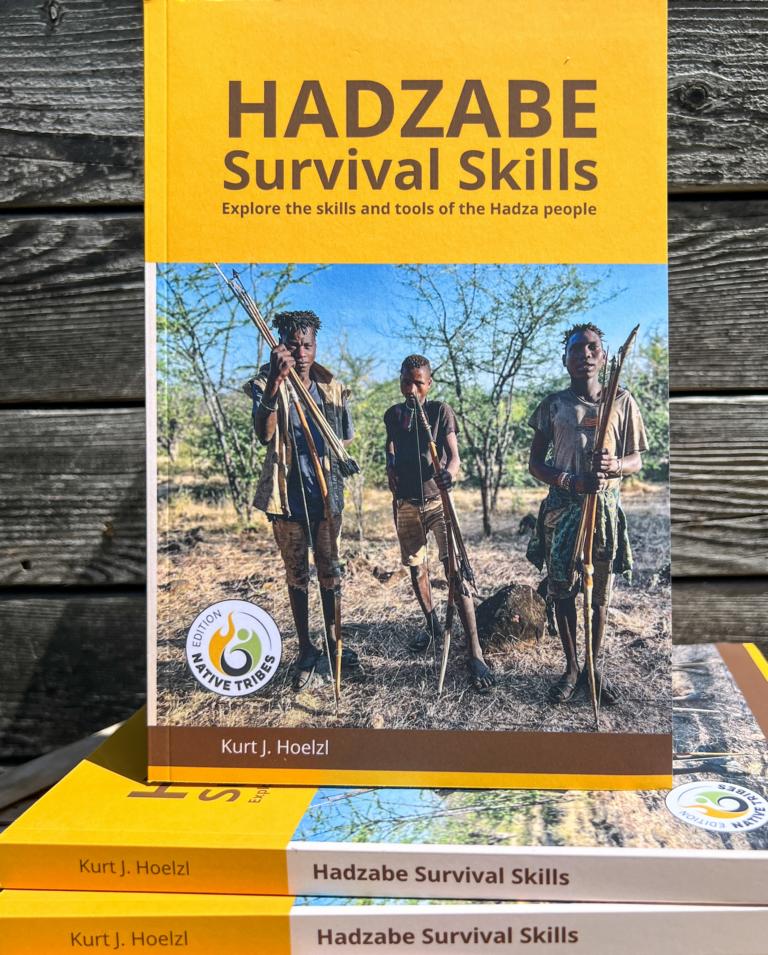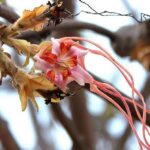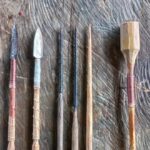Learning the craft of bamboo fish trap weaving
The correct English wording for a ‘Lop’ in Thai would be ‘Horizontal cylinder trap with entry cone’. It is used to catch various freshwater fish and crustaceans, including small snakeheads, catfish, shrimp, swamp eels, etc. Traditionally, bamboo and rattan vines were used for fish trap weaving. Nowadays, fish traps are also made of a steel wire skeleton and covered by nylon netting.
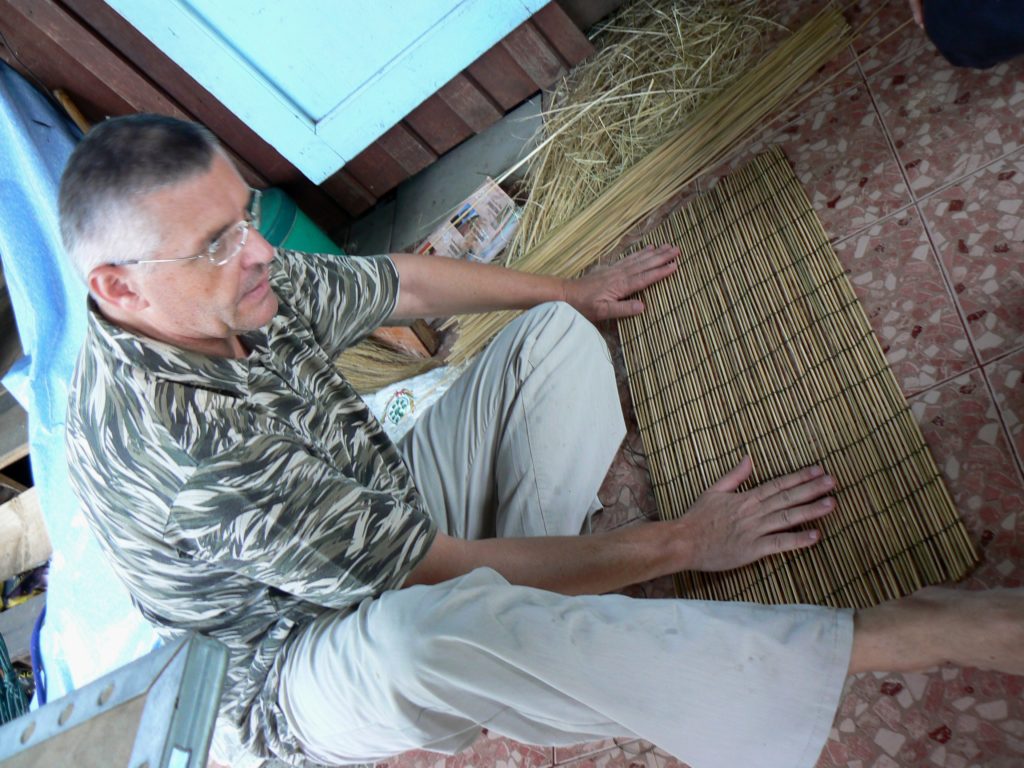
The intention was to learn to weave bamboo fish traps and use nylon string for binding. One of our company employees in Bangkok had an uncle in the upcountry. He produced Lops for his purposes and whenever he needed a new one. Mr. Boonchuay Gasun was a friendly and patient teacher. Due to my limited Thai language speaking ability, my driver, Mr. Bu, acted as a translator.
Carving bamboo poles into bamboo sticks
My first impression of learning bamboo fish trap weaving was a bit strange. Mr. Boonchuay hopped onto his motorbike, and off he went. Half an hour later, he returned with some 3 m long, green bamboo poles of about 5 cm diameter, which was an exciting sight. He was driving his motorbike and was balancing a bundle of long poles on his shoulder.
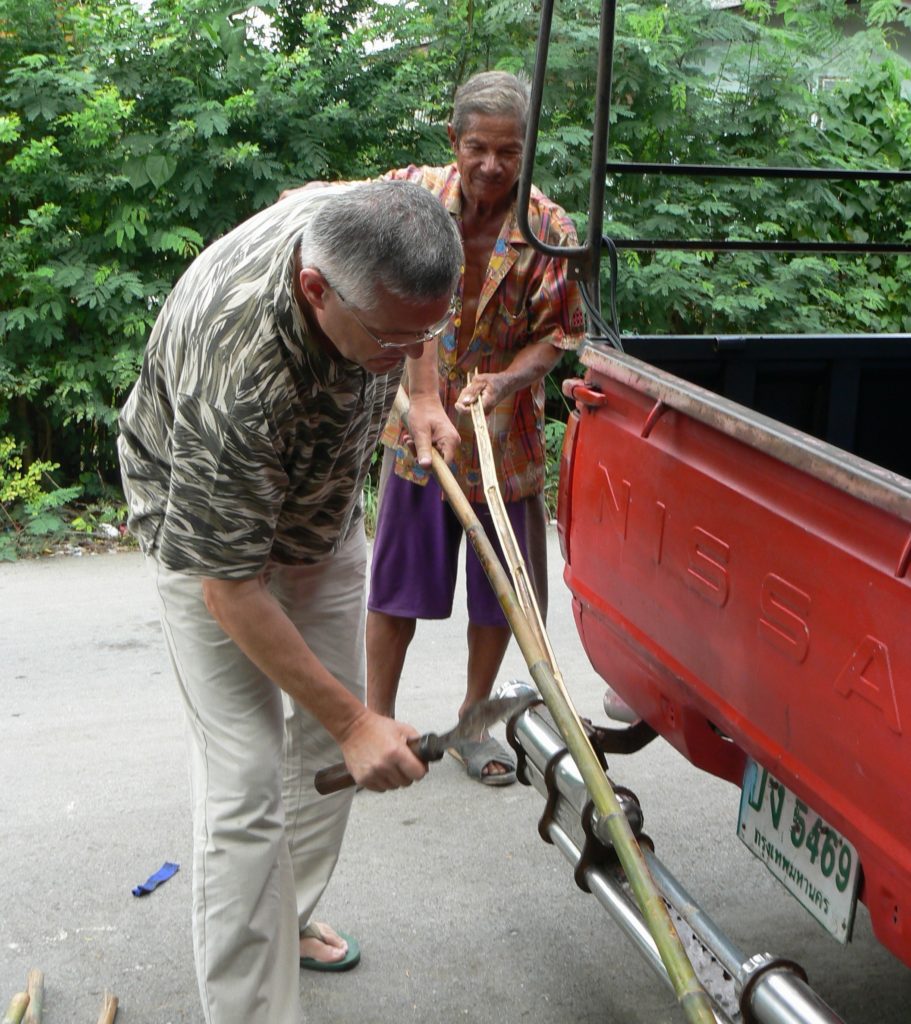
We split these poles repeatedly until we had a heap of about 5 mm wide bamboo sticks. Not all of them were split straight, but the majority were.
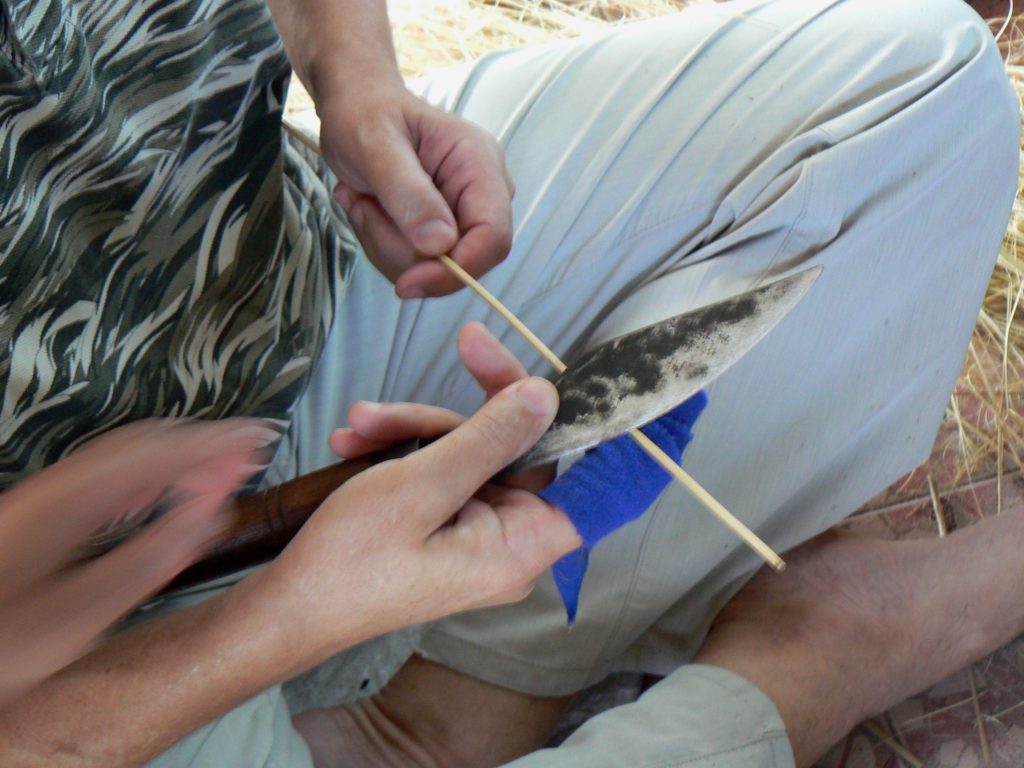
Next, we had to round up all these sticks with a bamboo knife. The split stripes were moved between the knife-cutting edge and our protected index finger. Our blue cloth for finger protection looks good in the picture. But it only partially protected the fingers from the silicate-rich, hard, and brittle bamboo splinters. Luckily, Mr. Boonchuay helped round up the heap of sticks. And we finished the day with enough splinters in the index finger for the whole next year.
Crafting bamboo sticks into the various design elements of the fish trap
The following weekend, we cut the rounded sticks into the correct lengths.
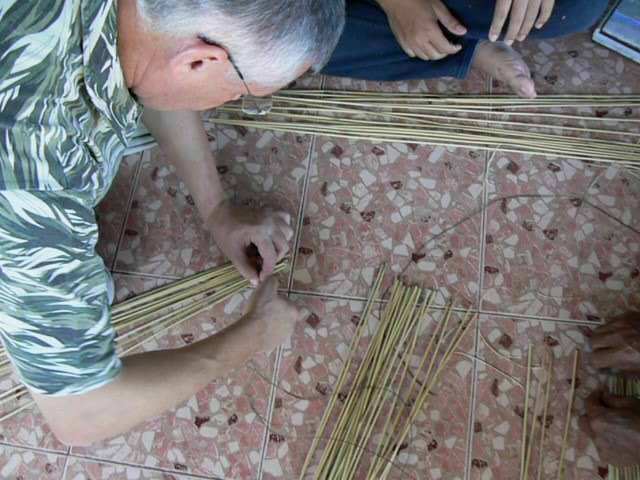
And after that, we knotted them with string into a mat.

As a next step, we cut thin twigs from a local tree and bound them to form rings. They served to hold up the round shape of the trap. On the following day, the most demanding work started. We crafted the inlet cone with thin bamboo sticks. The cone’s inner opening was so large that an average-sized snakehead fish could move in. He should touch the sharp stick ends and not be able to move out anymore. After that, fitting all the parts together (mat, rings, end ring oval, inlet cone) took us the whole day.
Making the backdoor design of the fish trap
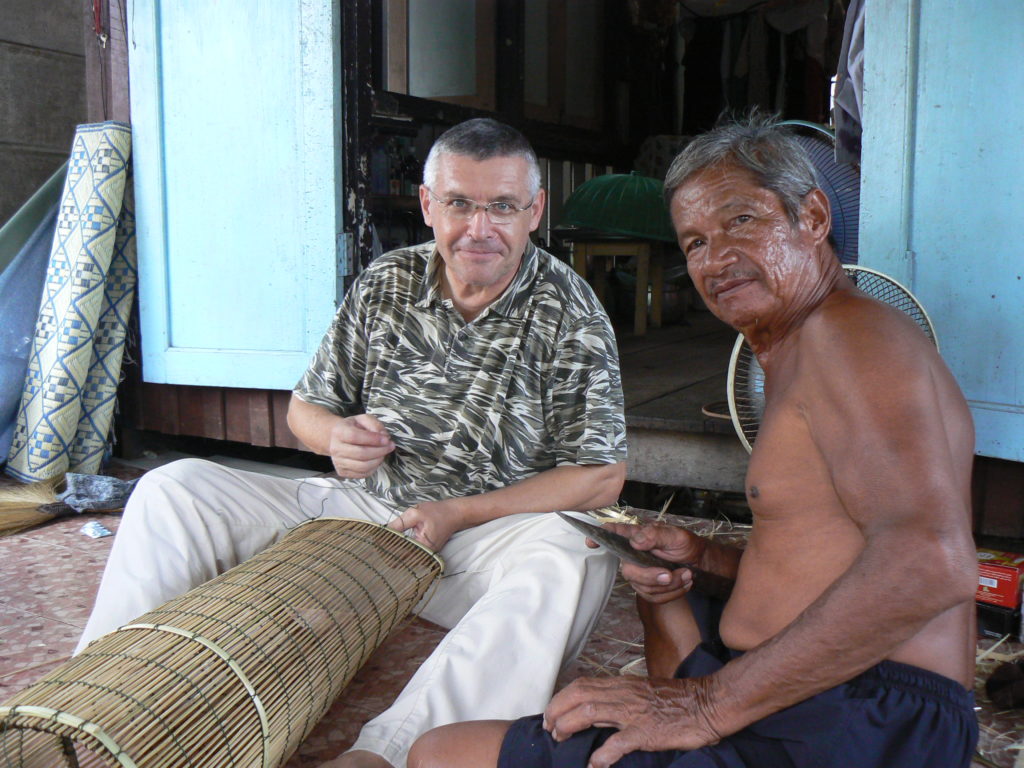
Following Saturday, I had to craft the opposite side of the inlet cone. That’s where the catch will be removed and can be closed again. As a junior fish trap weaver, this took me a whole day’s work. I even had to carve the shutting board out of a massive piece of Teak wood. And the bamboo sticks were skinny. Knots to the string must be kept to an absolute minimum, as space is limited. And it seemed to me that my fingers were by far too thick.
Finalizing the bamboo fish trap
In the following days, Mr. Boonchuay improved my work of art wherever necessary and possible. He tweaked the tensioning of the binding of the inlet cone and improved spots here and there.
The following Wednesday, I pushed off early from work and proudly picked up my crafted fish trap from Mr. Boonchuay and his family. With that, we created a new fish trap and, more importantly, a new friendship.

In the following years, Mr. Boonchuay was one of my mentors for traditional fishing in Thailand.
Lessons learned from manufacturing a bamboo fish trap
- How to cut bamboo poles into thin sticks
- How to defuse the dangers of sharp bamboo stick edges and handle bamboo knots
- How to weave a bamboo mat
- Design and crafting of fish trap inlet cones
- The reason for the pointed nose at the fish trap back side
Further readings about Basket Fish Traps on this website:
Basket fish traps at the seashores of Eastern Africa
Trapping Snakeskin Gourami in the Mekong Delta
Using a stomping basket to catch fish in Vietnam
Fish trapping at a fast-flowing brook in Vietnam
.

